How to grow green velvet Alocasia frydek – A complete care guide
Alocasia frydek

Alocasia frydek is one of the most fascinating indoor plants, I have ever experienced. The deep green large leaves along with white-colored veins make it unique among the other indoor plants. It will look something different from all other indoor plants you have.
The specialty of this plant is that it will always keep you engage with itself. If you wonder how then read the complete article, you will get to know about that.
Here is a complete care guide about the plant, solving all the problems you will face while taking care of Alocasia frydek.
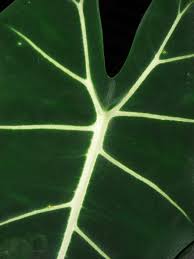
Some important points about Alocasia frydek
- Botanical name- Alocasia micholitziana ‘Frydek’ or Alocasia frydek
- Common name- Green Velvet Alocasia, Elephants Ear plant, African Mask plants
- Family- Araceae
- Origin- Southeast Asia, Philippines
- Plant type- Tropical indoor plant
- Light requirement- Medium to bright indirect sunlight is best for Alocasia frydek.
- Soil requirement- Fertile soil with a good drainage facility and rich organic matter
- Water requirement- The plant is sensitive to waterlogging conditions, but it loves moist soil.
- Temperature- Alocasia frydek require a higher temperature ranging between 650F (180C) to 850C (290C).
- Humidity- The plant requires high atmospheric humidity to survive.
- Fertilizer requirement- Organic fertilizer is best, you can also add a balanced fertilizer
- Flowering- Rarely flower indoors.
- Pruning- Only the older leaves are to be pruned out.
- Repotting- Not done very often. Done every one or two years when the plant is grown.
- Propagation- Done by separating the plant along with its rhizome. Done at the time of repotting in the spring or summer season.
- Toxicity- It has a toxic effect on humans as well as on pets.
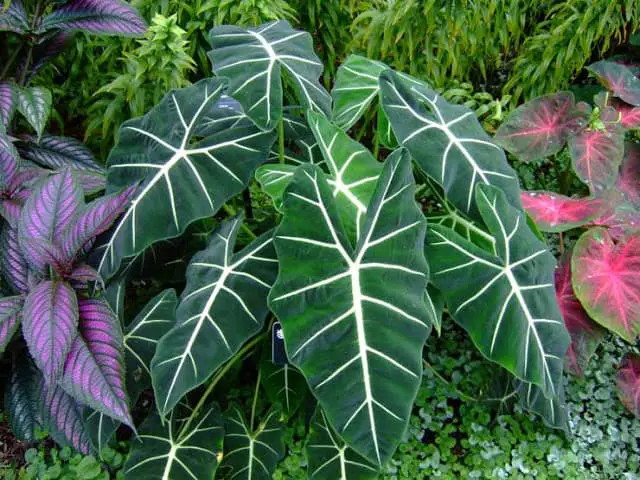
Complete care guide to Alocasia frydek-
Here are all aspects covering the complete guide about how to grow and care Alocasia frydek.
1. Light requirement-
Green velvet Alocasia requires medium indirect sunlight for its best growth and development. Diffused sunlight is ideal for this plant.
Direct sunlight will cause a scorching effect on the leaves. Therefore, it can only sustain 2 to 3 hours in direct sunlight. It has to move to a shady place.
An east-facing window is the best place for Alocasia frydek as it provides some amount of direct sunlight in the morning hours and then provides indirect sunlight.
Special care- Plant drops its leaves if they do not get sufficient light. Therefore. It is always advisable to rotate the plant so that, light falls evenly on every leaf and you got a beautiful symmetrical plant.
Don’t forget to read our articles about, is your plant getting too much light by CLICKING HERE.
2. Soil requirement-
Elephant’s ear plant needs soil with good drainage. It is the primary criterion, as the waterlogging condition causes the rotting of the root. So a well fertile soil with good drainage and rich in organic matter will do the job for you. And the plant loves moist soil.
You can make a potting mix by adding 60 percent of peat, 30 percent perlite, and 10 part of compost or worm cast, to grow the plant. Coco peat can also be used to hold a good amount of moisture in the soil for a fairly long time.
Get the perfect potting soil for your indoor plant by CLICKING HERE.
Organic matter should be added to the soil as it increases the porosity as well as the water-holding capacity of the soil. Therefore, the drainage will improve and the roots can breathe properly.
3. Water requirement-
Plant is sensitive to overwatering and under-watering.
Overwatering leads to the rotting of the roots and the plant will ultimately stop its growth. The waterlogging condition also hampers root respiration. It leads to the yellowing of leaves and many more physiological symptoms will also appear.
Underwatering leads to drooping of the leaves. A prolonged dry period may lead to dormancy and ultimately the plant will die. Therefore, watering is to be done properly in order to get attractive foliage.
Watering should be done when the top one to two-inch layer feels dry when touched. There is no certain interval for irrigation to be applied. Therefore, things should be controlled manually.
Since Alocasia frydek is sensitive to both overwatering and underwatering, the following are the points to be considered when watering this beauty.
- Choose appropriate sized pot- If you have chosen a huge sized pot for planting Alocasia frydek then think again. In a large pot, there will be a large amount of soil and it requires more time to drain out completely, which leads to waterlogging conditions. Therefore, initially, a small pot will do well for you.
- Make proper drainage holes- In your pot, make sure that there is enough space for draining out of excess water. If not, then you can 2 to 3 holes and make things run smoother.
- Prepare a good potting mix– Your potting mix should contain an appropriate amount of peat (to hold a reasonable amount of water, so that the soil will remain moist), appropriate perlite or pumice (help to drain out excess water to prevent waterlogging condition.) and a considerable amount of compost (to provide nutrient to the plant).
- Inspect regularly- You have to inspect at a regular interval whether the plant is showing any water stress symptoms or overwatering symptoms. You can also check by touching the top one-inch layer of soil. If it is dry, then go for watering.
- Since there is no fixed interval of irrigation, you have to take care of the above points to make your plant healthier.
4. Temperature-
As Alocasia frydek is a tropical plant, it generally requires a normal to warm temperature. The ideal temperature range is from 650F (180C) to 850C (290C).
The plant is very sensitive to low temperatures. Below 160C the plant will struggle to survive. Therefore, during the winter plant may go to dormancy. As the normal temperature arrives plant again starts to grow.
5. Humidity-
As a tropical plant, the green velvet Alocasia frydek requires high atmospheric humidity to grow properly. A humidity level of more than 50% is ideal for the growth of this plant.
Lower humidity leads to brown leaf tips and brown edges. Hence if you want to keep the leaves of your Alocasia evergreen and eye-catchy, you have to compulsorily, keep the plant in a humid place.
Following methods are advisable to keep the humidity at a higher level
- Grouping of plants– Plants when kept in groups, the atmosphere will be more humid as a result of their mutual transpiration. Therefore, it is an easy and effective method to keep all your tropical plants in a group in order to provide them a good humid environment.
- Pebble tray– A pebble tray is also a significant method to keep the nearby atmosphere of the plant humid. You can put some pebble in a tray and put some water in it, and then keep your pot on the tray. The surroundings will be humid as the water evaporates and keep the plant healthy.
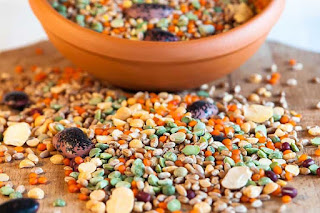
- Select a humid location– A humid location can do the work for you. Select such a location as near your bathroom or kitchen to place your plant, which by their nature are very humid and ideal for these tropical plants.
- Misting– Use a sprayer at regular intervals to mist the plant. It will keep the surrounding humidity high.
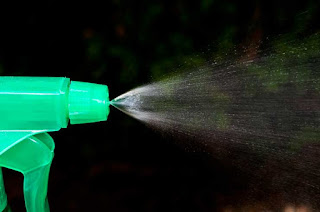
- Invest in a good humidifier– A good humidifier will do all the work for you. You have to only fill the water reservoir. It is a costly deal but it will let you roam around.
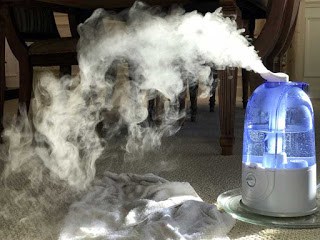
6. Fertilizer-
Organic fertilizer will do best for the plant. It will meet the dual-purpose need of your plant as well as the soil. Organic fertilizer provides sufficient nutrients to the plants and, it also increases the physical property of the soil. It increases the porosity of the soil and therefore increases the drainage and aeration.
But the problem with organic fertilizer is that you can not know what is the right quantity. Among the inorganic fertilizer, you can use a general-purpose balanced fertilizer (like 20-20-20 or 10-10-10). It will do great for your plant.
Mix these fertilizers in half of the strength recommended on the cover with water and make a solution and apply it to the plant. Make sure that, the fertilizer should not come in direct contact with the plant. Apply fertilizer every 3 to 4 weeks from spring to summer while the plant is actively growing. Less fertilizer should be applied in the winter.
Precaution to be taken before applying fertilizer
- Never do extra with fertilizers- As this may reflect as a toxic effect on your plant and hampers growth.
- Place the fertilizers away from the plants- If the fertilizer comes in direct contact with the plant it may harm the plant. So place them 5 to 8 cm away from the plants.
7. Flowering
Although Alocasia frydek is kept for its striking foliage, it also produces flowers, which is not very attractive. The flower consists of creamy white spadix and a light green spathe. After pollination, the berries may start to develop along the spadix.
It is difficult for the plant to produce flowers indoors because it is very hard to provide hot and humid conditions as the plant gets in the tropical forests. These plants will rarely produce flowers inside your home.
8. Pruning-
You do not have to worry much regarding the pruning of Alocasia. It is very low maintenance in terms of pruning. Only the older leaves which are dead or turned yellow are to be pruned out.
You can use a sterilized blade or scissor for the same. Make sure to sterilize it before pruning, as it will prevent any infection.
9. Repotting-
Alocasia frydek is a plant which not very fond of repotting. Initially, the plant has to grow in a relatively smaller sized pot, because it helps the irrigation water to escape out easily, not forming a waterlogging condition. As the plant grows it needs to be transferred to a new pot.
It generally needed to be repotted after 2 years, when the plant has a significant growth and some sort of root-bound symptoms, like the slower growth rate of the plant in spite of good care, roots popping out from the bottom of the pot, quick drying of the soil, etc. appears.
Repotting should be done in the actively growing season like the spring or the summer. A 1 to 2-inch bigger pot should be selected and the ideal potting mixture should be prepared before repotting. Then the plant is uprooted and repotted in the new pot.
After repotting the growth will be either completely stopped or will slow. You have to provide the utmost care at this time. After a few days, the plant will acclimatize to its new home and regular growth will occur.
10. Propagation-
Alocasia frydek can be propagated by dividing the larger plants. It should be done at the time of repotting the plant during the springs or summers. The following are the steps to be followed during the propagation.
- Initially, the plant has to be taken out of the pot and the soil adhering around its root is to be cleaned.
- Rhizomes with healthy leaves should be selected and the point of partition should be selected.
- Then the rhizomes along with healthy leaves are cut using a sterilized blade or cutter.
- Both the plants are then planted in new pots using the proper potting medium.
- Initially, the new plant will not grow up to the mark, but after a few days, both plants will grow at a regular speed.
- Propagation should be done in the springs or the summers while the plant is actively growing.
11. Toxicity
Alocasia frydek contains a chemical called calcium oxalate in its tissue, which causes irritation in the human body when comes to contact. Further, if it is ingested, it can cause pain and irritation in the mouth and digestive tract.
Therefore, it is always advisable to keep this plant out of reach from children and pets.
12. Disease
The main diseases of Alocasia frydek occur due to overwatering. Waterlogging condition around the root causes the root rot disease. As a result of which the growth is slower and the leaves become yellow.
As indoor plants, there is no or very less fungal, and bacterial attack occurs to the plant.
13. Pest-
Alocasia frydek is susceptible to sap-sucking pests like thrips, mealy bugs, aphids, spider mites, etc. You can escape your plant from these pests using neem oil spray. It is an ecofriendly feasible method. You can also adopt other pest control methods.
FAQ
Why my Alocasia frydek is drooping?
It may be due to overwatering or underwatering. You have to check both aspects if your plant is drooping.
In most cases underwatering leads to drooping of leaves, but in some cases overwatering may be the reason, like in this. Check the soil, if it feels moist and soggy and then also your plant is drooping, it clearly shows that you have overfed the plant.
Overwatering causes a waterlogging condition around the root, it prevents root respiration and the roots will remain in anaerobic condition, which promotes the rotting of the root. Therefore, the plant will droop.
You check the top one-inch layer of soil, if it is dry and your plant is drooping, then your Elephant ear plant is lacking water, you have to water more often.
Why my Alocasia has brown leaf tips?
It is due to lower atmospheric humidity. You have to increase the atmospheric humidity by several methods to keep the foliage bright and shiny.
Growth of my Alocasia frydek is stopped or My green velvet Alocasia has gone into dormancy – WHY?
It is due to unfavorable growing conditions. This plant usually goes to a state of dormancy or no growth in the winter months as the atmospheric temperature is too low at this time. As the winter ends, it also resumes its growth.
Lack of water and humidity also lead to a condition of dormancy. Along with brown tips.
Why the leaves of my green velvet Alocasia is turning yellow?
It is because you have supplied excess amounts of water to your plant. In this condition, the roots will be suffocated and can not respire, hence the leaves turned yellow.
Other reasons for yellow leaves may be the toxic effect of the fertilizer. You have applied the fertilizer in excess amount. Remember that, this plant will not accept extra fertilizers or nutrients at all. It will respond immediately.
If the plant is exposed to bright direct sunlight for a longer period of time, then also the leaves may turn yellow.
Conclusion-
Although the green velvet Alocasia frydek, the elephant’s ear plant, requires a considerable amount of care for its growth, but believe me when you look at the striking deep green velvety foliage while returning from your office or after doing a cumbersome work you will tap on yourself and you praise yourself saying that you are a proud owner of the green velvet Alocasia frydek.

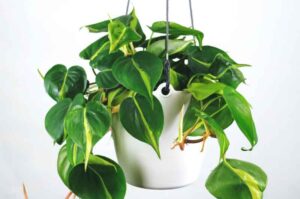
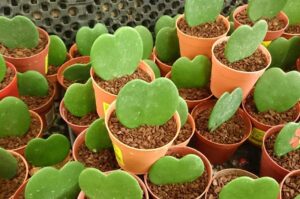
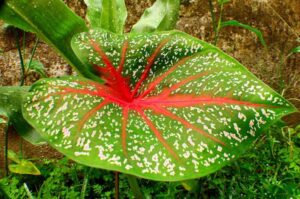
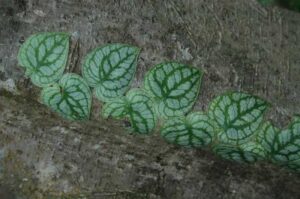
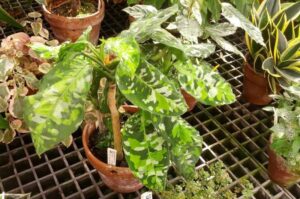
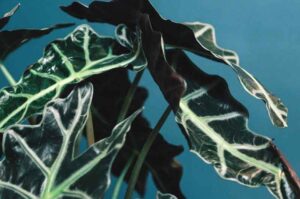
One Comment
Comments are closed.